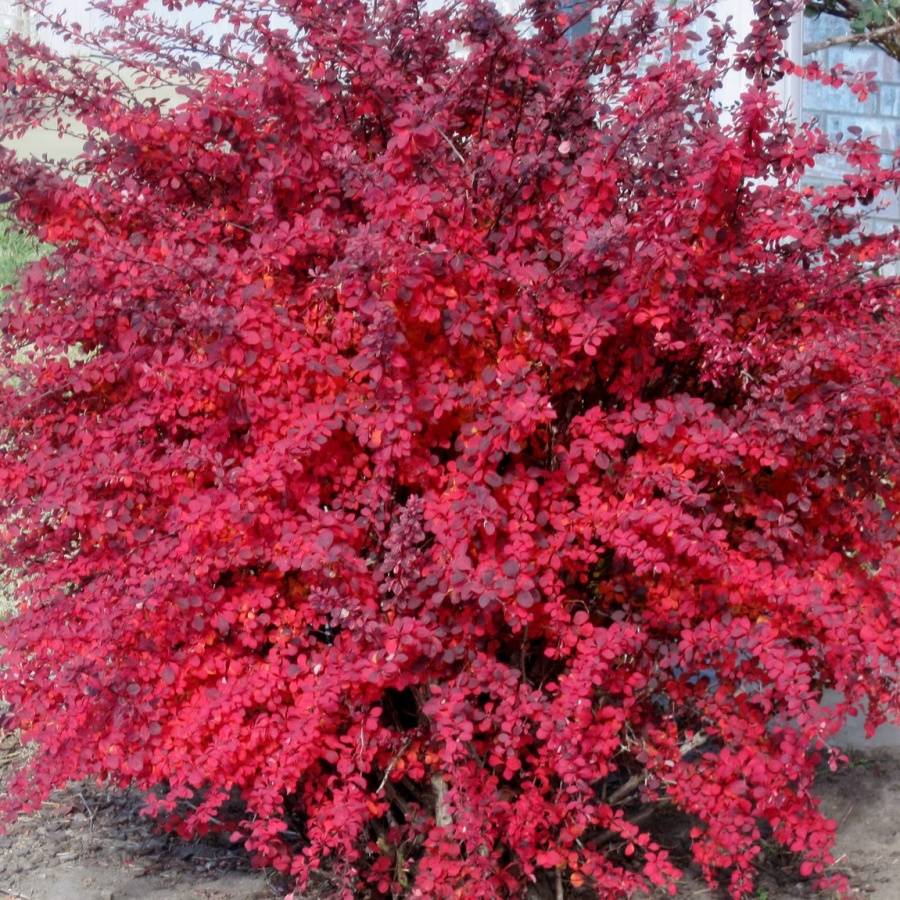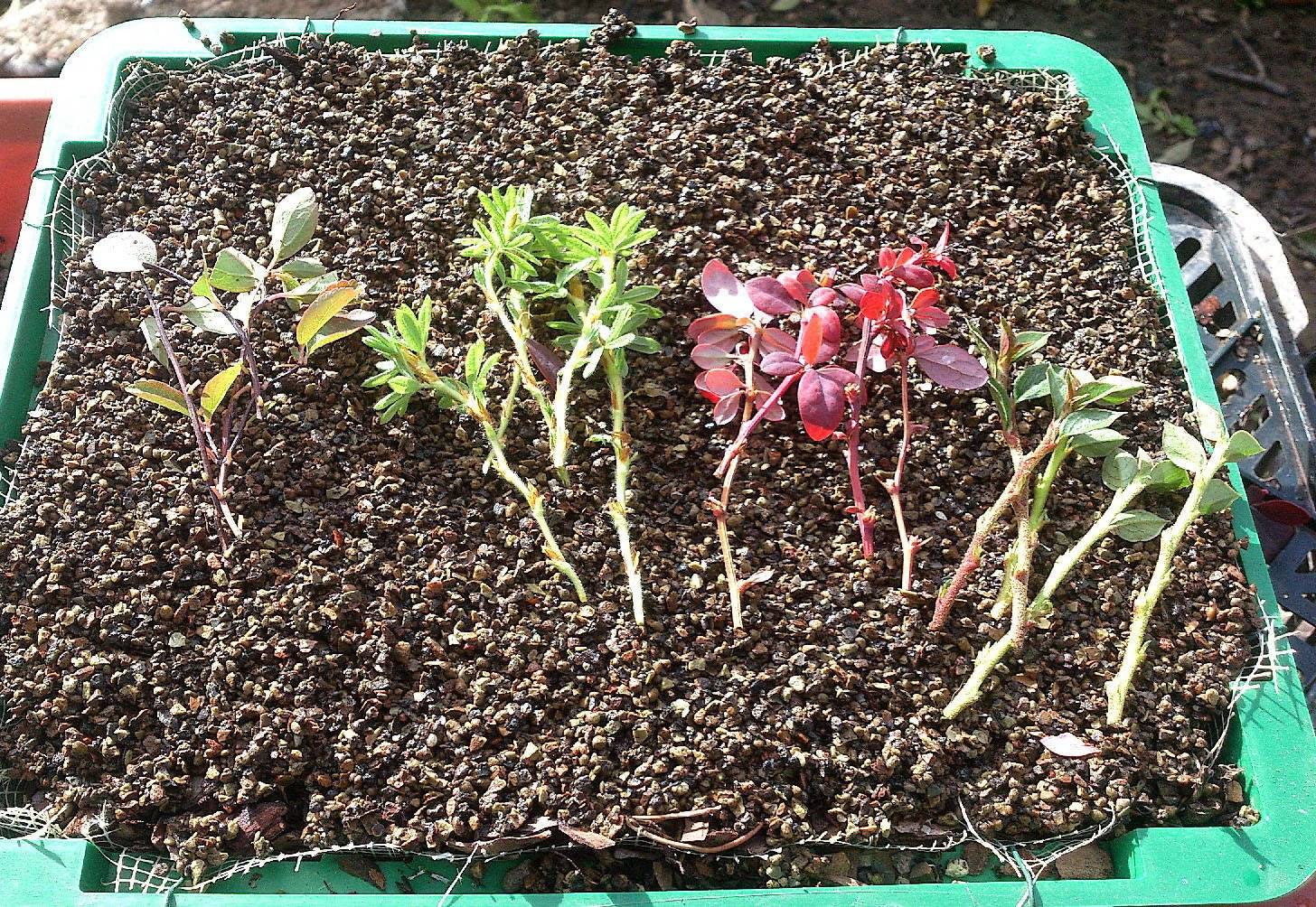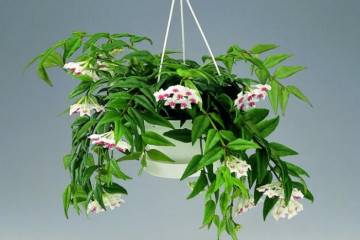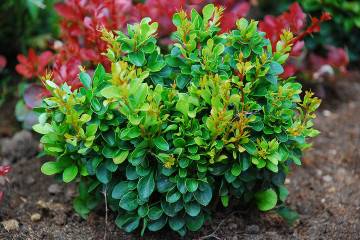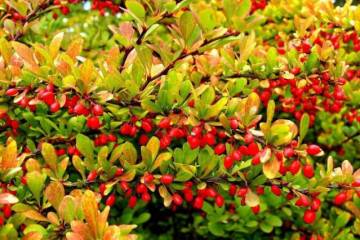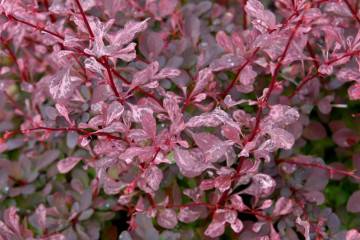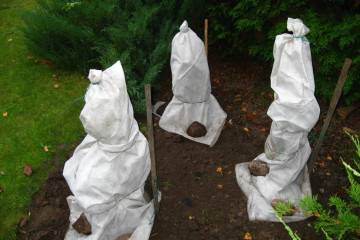Barberry shrub - species, varieties, planting and care
Content:
The barberry shrub consists of many stems covered with thorns. Red fruits and yellow flowers attract attention. The plant can be found in nature on different continents - from Eastern Siberia to North America. They use it as a free-standing bush, and create compositions with other plantings.
Decorative properties of barberry
The plant can often be found in parks and gardens. Due to its decorativeness, the barberry shrub fits well into landscape compositions. The crown lends itself well to haircuts and quickly recovers. A hedge is made from the bushes.
The origin and appearance of the plant
Barberry is grown in gardens, but it can be found naturally in North America, Eastern Siberia, Crimea, Europe and the Caucasus. The name of the plant comes from the Arabic, because the tree was brought by the Arabs from the regions inhabited by Berbers. In ancient Rome and Greece, it was believed that the shrub brings good luck to its owner. In Tibet, it was used in folk medicine as an effective natural medicine that fights many diseases.
Barberry is a round bush up to 3 m high with sprawling and thorny shoots. Green oval leaves, melliferous yellow flowers. Red oblong fruits are formed on the bush.
Plant flower description
The shrub has orange, golden or yellow flowers with the addition of a red tint. Small flowers are collected in racemose or corymbose inflorescences. All petals have two nectaries.
The best varieties of barberry for growing in the middle lane
Breeders have bred many varieties of baraaris, including those for cultivation in temperate zones.
Barberry Thunberg Golden Ring
A shrub with many shoots and a rounded crown. The leaves are purple with yellow edging, which turn red by autumn. Barberry grows in height and has a diameter of 2 to 3 m. Numerous flowers inside are yellow and red outside. Fruits are oblong red.
Barberry Thunberg Aurea
Many erect stems, spreading shape. Plant height - from 90 to 120 cm. There are sharp thorns on the stems. Oval leaves, 4 cm long, light green and yellow. In autumn, foliage can change color to reddish or orange. Pale yellow flowers. Bright red, oblong and glossy fruits.
Barberry Thunberg Atropurpurea Nana
A dwarf plant up to 40 cm high. The leaves of a shrub are purple in color, and by autumn they become bright red. In the inflorescence there are several flowers with a yellow filling on the inside and a red border on the outside.
Barberry Thunberg Pink Queen
Erect single shoots with thorns, their height reaches 1 m.Small leaves are green on the inside and purple-red on the outside with whitish-gray and pink specks. The tree turns red-leaved in the fall. In late spring, yellow flowers appear, and in September, red berries form.
Common barberry Atropurpurea
Oval leaves of reddish-purple color, thin stems, spreading shrub shape. In late spring, small, pale yellow flowers appear. In the fall, the foliage turns orange or red. Barberry is compact, growing up to 60 cm in height.
Barberry Ottawa Superba
Shrub with dark brown bark, thin branches. The burgundy foliage is oval and oblong in shape. In the spring, the plant forms large clusters of lemon flowers.
Common barberry Albo variegata
Branched bush, erect shoots with thorns. Bright yellow flowers with a delicate aroma. Lots of red berries. Green leaves with spots and white stripes.
Common barberry Aureo-marginata
The shrub is similar to the previous species, also branched and with thorny stems. The yellow flowers give off a honey smell. There are many red fruits on the barberry. The leaves are green with a gold border.
Transplant after purchase in open ground
Like most garden plantings, barberry can be replanted twice a year: in March-April and September-October. Planting is carried out in the same way, regardless of the variety and decorativeness of the plant. During the adaptation period, the shrub will need to take care of it in the form of adding top dressing, timely watering, pruning and removing weeds.
What is needed for landing
For planting, you need to prepare a seedling, soil, additional fertilizers, water. An important step is the choice of a place that should be well lit and for some types of bush it is worth making a fence from drafts. Excessively wetted soil can cause diseases caused by fungi.
Optimal soil
The best option for barberry will be a well-dried soil, loam. The plant reacts negatively to waterlogging and acidic soil. If it is impossible to prepare the substrate yourself, then it is better to purchase it in the store.
Step by step process
Planting is carried out only in the spring and autumn seasons. If the root system does not require adaptation, then the plant can be transplanted from the pot from spring to autumn. The bush should be at a distance of 2 m from other plantings. Before planting a beautiful barberry, you must remember that when landscaping and creating a hedge, you can place 2-4 bushes per meter.
Planting technology should look like this:
- Two weeks before transplanting, holes are dug 30 cm deep for 2-3 year olds and 45 cm for 5-7 year old seedlings.
- The soil is prepared from sand, garden soil and humus in equal proportions, then it is poured into pits.
- Additionally, 20 g of potassium sulfate and 100 g of superphosphate are added.
- All components are gently mixed so that the root system of the barberry does not come into contact with the bait.
- If the soil is acidic, then add 300 g of lime or dolomite flour, or 200 g of wood ash.
- The seedlings are placed in a hole, covered with an earthen mixture and tamped.
After planting, the plant must be watered. It is also recommended to mulch.
How to propagate barberry at home
Barberry can be propagated in several ways: by seeds, cuttings, dividing the bush and layering. The first two options remain the most popular.
Propagation by cuttings
How to propagate barberry by cuttings at home:
- at the beginning of summer, cuttings of 15 cm are cut from the side stems;
- the lower leaves are removed, and the bases of the cuts are treated with a preparation for rapid root formation;
- cuttings are planted in perlite or a mixture of peat and sand;
- cover the container with a film, periodically moisten, ventilate and loosen the soil;
- rooted seedlings are moved to another container, and fertilizers are added to the soil.
A year after propagation by cuttings, the shrub can be planted in a permanent place.
Growing from seeds
For this method of plant breeding, you will need to collect or purchase seeds. Sowing is carried out in open ground or in a container at the end of autumn. Seeds are sown to a depth of about 1 cm. Planting in spring requires stratification, which is kept for 3 months at a temperature of 3-5 degrees.
When true leaves are formed on the sprouts, they should be thinned out every 4 cm. The seedlings are planted in a permanent place 2 years after sowing.
Care
For the active growth and flowering of the barberry shrub, proper planting and care is required. The shrub needs fertilization, moisture, pruning.
Watering mode
Due to the increased sensitivity of barberry to soil moisture, it is necessary to observe moderate watering and only in the heat. The soil will retain moisture better if loosening and mulching is carried out a couple of times. Mulch layer - 6 to 8 cm.
Top dressing
In the first year of life, the plant is not fertilized. Barberry, an edible and poisonous shrub, has enough nutrients that are contained in the soil for planting. Top dressing is carried out every 2-3 years. In the spring, nitrogen preparations are suitable for this purpose - ammonium nitrate and urea at a dosage of 20 g per 1 sq. m. near-stem area.
In the summer season, fertilizers are used, which include potassium, phosphorus and nitrogen. From September to November, phosphorus-potassium fertilizing will be the best option, it is taken 30 g per 1 sq. m. Nitrogen is not used in autumn, because this component provokes the growth of greenery, and barberry is preparing for wintering at this time.
Features of care during flowering
During active growth, the bush is fed with combined fertilizers twice a month. Nutrients are applied only to moist soil. The optimum temperature is 18-24 degrees. The shrub loves lighting, but not the scorching rays of the sun. In the heat, it is better to shade it. When a tree needs to bloom, it needs regular watering. Water can be applied when the top layer of the substrate 3-5 cm thick dries slightly.
Features of care during the rest period
Pruning is recommended immediately after flowering to shape and improve the condition of the barberry. Old, broken, pest-affected, dry and inward-pointing branches are required to be removed. For the first 5 years, the shrub should be covered with dry foliage or spruce branches during frosts. In cold areas, the branchy stems are pulled together with twine and fenced off with a net, which should be 10 cm higher than the barberry. No top dressing is carried out. In autumn, rarely watering is carried out, and in winter it is stopped altogether.
Barberry is an ornamental shrub that will decorate any garden with yellow flowers and green-red foliage. Ornamental plantings are used to create hedges. Edible fruits are used in folk medicine, because the beneficial red berries have anti-inflammatory, antispasmodic, analgesic and antibacterial properties.

